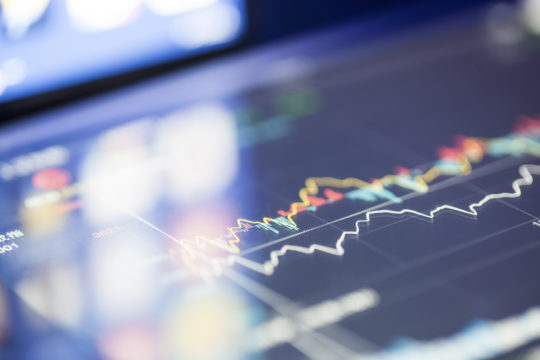
For companies and their shareholders, there are key choices to make before repurchasing shares.

For companies and their shareholders, there are key choices to make before repurchasing shares.
By Allen He, CFA
As the global economy rebounds, companies are preparing to launch a record wave of buybacks. Buybacks have become a global phenomenon over the past 20 years, with many companies viewing them as an attractive alternative to dividends in returning capital to shareholders. They are flexible, recycle excess cash to the economy, and provide tax advantages in certain jurisdictions.
While buybacks can indeed be an effective way to distribute capital under certain circumstances – and can be used to signal to investors that their stock is undervalued – care must be taken to mitigate the downsides of buying back shares.
As tempting as buybacks may be as a quick way to return funds to shareholders, there are several pitfalls to consider.
From a strategic perspective, timing a buyback poorly can lead to losses. Companies cannot perfectly predict the market and often buy at market peaks, rather than troughs, due to overconfidence. This is also the tendency when the firm is generating excess capital. It can be mitigated by taking a long-term dollar-cost averaging approach to buybacks, adjusting the strategy based on market conditions and adopting a break-even scenario analysis.
Aside from the inherent risk of insider trading, another strike against buybacks is that they are commonly used as a means to manipulate performance on targets tied to compensation. Buying back shares can inflate earnings-per-share (EPS), for example, and make it far easier to achieve quarterly guidance targets. While doing this might seem attractive, artificially enhancing EPS in the short term could actually divert capital away from growth initiatives. Companies are better off creating genuine value through organic revenue growth over the long term.
Buying back shares also has the potential for exacerbating income equality. Rather than redistributing earnings to the company’s workers or contributing to growth initiatives, buybacks feed cash back to executives and shareholders. Academics have argued that when pressured to reach short-term targets, teams use buybacks to temporarily boost profitability metrics, depriving their workforce of those earnings. Buybacks of course are a symptom, not the root cause, of a system wherein the underlying structure of the share ownership may be the core issue.
The drawbacks and implications of buybacks for companies and their stakeholders are clear. To harness the full potential of buybacks as a capital allocation tool, rather than as a shortcut, there are key elements to consider.
Companies should be sure to have enough liquidity to repurchase shares or overdistributing capital to shareholders. While thin cash buffers are generally not a problem in a bull market, during a recession companies that play too close to the edge weaken their corporate resilience needlessly. Past FCLTGlobal research has indicated that over-distribution of capital is associated with lower returns and leaves companies vulnerable in a crisis.
It can also be helpful to view buybacks through a broader capital allocation lens. Companies should ask themselves if buying back shares brings a higher return-on-investment (ROI) than other options. Could the excess capital instead be allocated for R&D, fixed investments, M&A, or other useful areas first? To that end, could the buyback prove to be a destructive move? Whether intentional or not, buybacks artificially raise EPS (by subtracting from the denominator). Stripping out compensation links to EPS, and strategizing for long-term metrics such as ESG, may help alleviate this issue.
Shareholders should expect their investee companies to be able to provide clear explanations for how they plan to use buybacks. Through insisting on transparency, and encouraging the use of long-term corporate roadmaps, shareholders can help mitigate many of the potential pitfalls.
For those investors in countries where shareholders have a vote on buybacks, they can exercise their right directly. Shareholders without voting rights on this issue can still influence related areas like compensation metrics and director elections.
Buybacks are both misused and misunderstood. They can be an effective way to return capital to shareholders, but have a number potential pitfalls. Companies and shareholders could each take steps to understand how buybacks affect them and the overall financial ecosystem in order to mitigate the downsides. Ultimately, buybacks can be wielded thoughtfully and, in rare, specific circumstances, in support of long-term value.

Risk and Resilience | Article
30 March 2021 - On March 24th, 2021, FCLTGlobal led a risk focus group alongside Alison Taylor and Brian Harward, a team of behavioral scientists from Ethical Systems, an in-house think tank at NYU’s Stern School of Business. The conversation brought together subject matter experts and decision makers with the aim of both understanding why long-term investors default to short-term measurement methods and identifying barriers that prevent them from better aligning risk with their investment horizons.

Governance | Article
20 April 2021 - For public companies, more diverse boards of directors are correlated with significant long-term value. The same can be true for private companies. What role can GPs and LPs play in driving change?

Risk and Resilience, Climate | Article
29 April 2021 - Commitments to net-zero objectives are taking hold across the investment value chain and present substantial opportunities. But are these initiatives likely to infuse capital into actual climate solutions, or do we risk creating structures that prioritize individual carbon neutrality while delivering less actual impact? Our conversation with investors and companies highlighted the importance of leadership in capital allocation and asset management approaches that produce measurable, long-term improvements in climate sustainability, rather than simply shifting assets to the next owner. Discussion Leaders Debby Blakey Chief Executive Officer, HESTA Ken Mackenzie Chairman,...